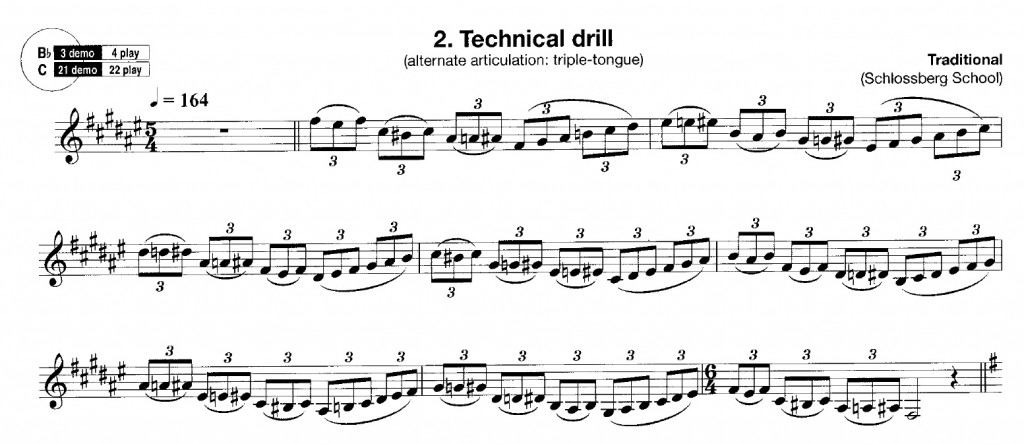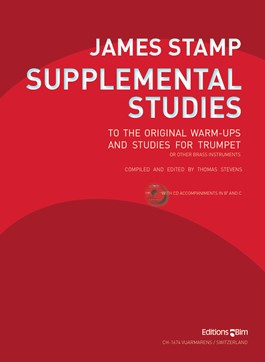Let’s take a look at another Stamp exercise, this time from the Supplemental Studies:
 Yowza. As you can see from the key change at the very end of the exercise, it repeats in G (and continues ascending chromatically to C). It looks intimidating, but if you simplify it the patterns are simple. In fact, there’s just four things happening:
Yowza. As you can see from the key change at the very end of the exercise, it repeats in G (and continues ascending chromatically to C). It looks intimidating, but if you simplify it the patterns are simple. In fact, there’s just four things happening:
Pattern A: the first three on-beats are ornamented with the note a semitone below
Pattern B: the first three beats outline a downward arpeggio (within the key)
Pattern C: the last two beats are an upward scale
Pattern D: every bar repeats Patterns A-C a step lower until we’ve gone an octave
If you take out the semitones and scales, you get the skeleton, which doesn’t look so bad (especially in C major):

When I first started practicing this exercise I had flashbacks to first-year music theory, and I asked myself: how well do I really know which chords are major/minor/diminished?
We could also take the arpeggios out and focus only on the scales, which in this case gives us a series of modes:
One theme coming out of these articles as I write them is the link between music theory and music performance. In this case, we see a practical application for something everyone learns in first-year music theory: which chords are major, minor or diminished. (As well as the concept of modes) However, I was surprised at the huge gap between my “comfort” with this concept in theory class versus my total discomfort and confusion as I attempted to play the exercise (even simplified).

This week’s exercise comes from James Stamp, Supplemental Studies, compiled and edited by Thomas Stevens. The big benefit to this book is the accompanying CD (not available for free download on the BIM site as the Warm-Ups and Studies CD is). These exercises build on the previous book and also connect Stamp to his own teachers, especially Schlossberg. Worth a read.


